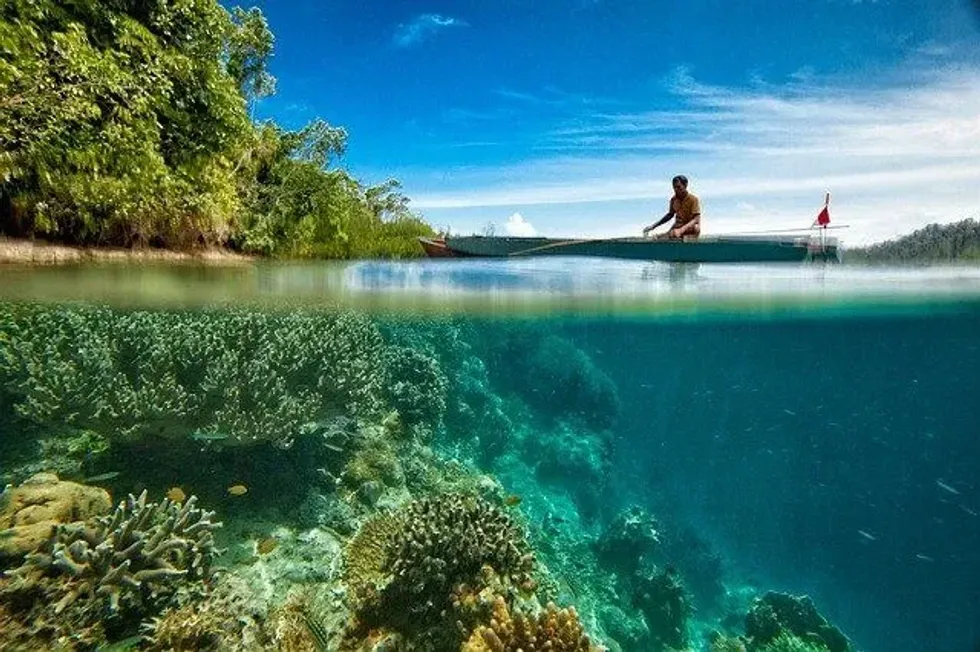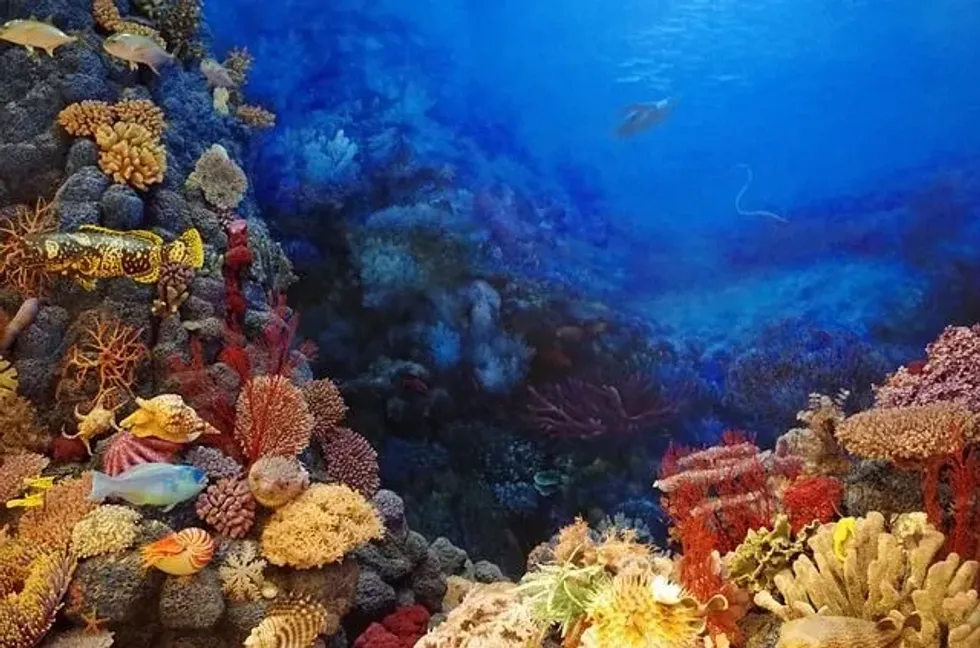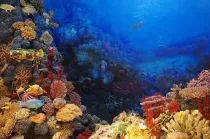Fun Coral Facts For Kids

Content
- What type of animal is coral?
- What class of animal does coral belong to?
- How much coral is there in the world?
- Where does coral live?
- What is coral's habitat?
- Who does coral live with?
- How long does coral live?
- How does it reproduce?
- What is its conservation status?
- What does coral look like?
- How cute is it?
- How does it communicate?
- How big is coral?
- Can coral move?
- How much does coral weigh?
- What are their male and female names of the species?
- What would you call a baby coral?
- What does it eat?
- Is it harmful?
- Would it make a good pet?
- Did you know...
- Why is coral so important?
- What is coral bleaching?
Are you interested to know Coral reef facts? Here we have all the information that can be found about Corals.
Corals are aquatic invertebrates that belong to the phylum Cnidaria. There are over 6000 different species of Corals that are found on our planet.
These animals have a huge lifespan and some are known to survive 4000 years as their average lifespan. Corals themselves act as mini habitats and biomes to different aquatic animals like fishes and mollusks.
Corals are vital for marine wildlife and humans as they protect the beaches from waves and control the sea temperature. The marine plants in them under the water reduce pollution by absorbing carbon dioxide.
The Great Barrier Reef is the widest reef in the world. It is about 18 mi in length.
In this article, you'll find information about Coral calcium, golden coral, black coral, red coral. Read this article to know Coral reef fun facts and numerous other facts about Coral reefs. If you find this article interesting then do check out freshwater mussels and shrimp facts too.
Coral Interesting Facts
What type of animal is coral?
Corals are animals that don't have a vertebrate and they belong to the phylum Cnidaria.
What class of animal does coral belong to?
Corals are aquatic animals that belong to the class of Anthozoa of the Animalia kingdom.
How much coral is there in the world?
It is impossible to give a number as to how many corals are present on our planet. The Earth is the home of over 6000 different species and types of coral.
It is also estimated that corals constitute about one-fourth of all the aquatic animals of the planet. However, the population of corals and coral reefs of the world is declining due to numerous human activities which pose a great threat to the survival of these invertebrates.
Where does coral live?
Corals are invertebrates that are usually found in tropical waters and oceans. Thus the majority of these marine species are found near the tropic of Cancer and tropic of Capricorn as they serve the perfect habitat for these aquatic animals.
Coral reefs are found exclusively in the Indian Ocean, the Caribbean Sea, the Pacific ocean, and other nearby seas and oceans. These animals are usually found near the surface of the water where there is warm water and sunlight, as corals serve as houses of numerous plants which grow via photosynthesis.
However, there are also corals that live under the sea and near the ocean floor.
These types of corals are often referred to as deep-sea corals. These corals effectively grow without light and heat.
They prefer the cold temperature and they can be either the hard and stony corals or the soft corals. As these deep-sea corals are devoid of algae and phytoplankton they don't need sunlight and thus their growth is extremely slow.
What is coral's habitat?
The main habitat of the coral and coral reefs are the tropical oceans and seas. These animals are extensively found in the tropical belt of the world and are thus found in all major seas and oceans of the world.
Corals on the other hand themselves serve as a microbiome for other aquatic plants and animals. Thus they can also be termed as a mini habitat. These animals provide food, shelter, and other basic necessities to small and average-sized plants and animals and thus creates an ecosystem in the sea.
Who does coral live with?
Every single coral is referred to as a polyp and thousands and thousands of similar coral polyp of the same genus and species live together to form their own colony. Once a coral dies, the skeletal remains of the existing coral solidify and forms beautiful coral reefs.
These coral reefs then serve as a vital portion of the marine ecosystem. However few species of corals are solitary in nature rather than the ones that form a colony.
How long does coral live?
Corals are the animals on our planet that outlive all other animals. As a result, they are also known as the most-long lived species of Earth.
A few species of corals have huge lifespans which can last more than 4000 years. For the corals that live in colonies, the individuals can die but the colony keeps growing on and on, so theoretically speaking, a coral never dies and lives forever.
How does it reproduce?
Reproduction in corals occurs in many different ways. Corals usually occur in two different types, the first being unisex in nature while the other being hermaphrodites.
Both two variants can reproduce either by the processes of sexual reproduction or by asexual reproduction.
The asexual reproduction produces genetically similar species and thereby increases the effective size of the colony. While in the case of sexual reproduction, as two different species are involved it leads to the mixing of genes thereby increasing the genetic diversity among the corals and hence leads to a start and growth of a new colony.
In the process of asexual reproduction, the individual coral polyps create an exact copy of themselves thereby increasing the size of the colony. This usually happens by the process of fragmentation or budding.
Budding occurs when a coral attains sexual maturity and creates an entirely new exact genetic copy of itself. The process of fragmentation is different.
In this case, a portion of the colony breaks away from the existing colony and starts its own respective colony. Is believed that fragmentation usually occurs when the coral is hit by storms or gets disturbed by man-made objects.
In the process of sexual reproduction like the general case, the eggs of a particular species are fertilized by the sperm of another species, and thus a new species is formed thereby creating genetic diversity in the gene pool.
Sexual reproduction occurs in mainly two different ways, internal and external sexual reproduction. In the process of sexual reproduction, after the fertilization takes place larvae are formed which are independent swimmers.
These larvae gather and then finally settle down on a substrate from which it derives nutrients and then starts turning into polyps.
External fertilization is most evidently seen in the hard stony corals. The process of spawning in corals usually occurs every year. In the process of internal fertilization, the corals form the eggs and then release the sperm into the water. As the sperm starts to descend they fertilize the eggs thereby completing the process of internal fertilization.
What is its conservation status?
The International Union for Conservation of Nature of the IUCN has placed the corals under the category of Least Concern. However, there are few species that are Critically Endangered while others are Near Threatened and Vulnerable.
Recent studies have shown that 10% of the total coral reef are believed to be dead and it is estimated that by the end of 2030 a whopping 50% of the corals of the world would be dead.
The main threat which corals and coral reefs face is due to human activities and climate change.
Be it ocean mining or oil spills, or pollution. Sometimes, natural events like climate change, volcanic eruptions, environmental damages, and changes in the pH of the water also lead to the critical destruction of the corals.
Coral Fun Facts
What does coral look like?
Corals are invertebrates that are usually found in seas and oceans. There are mainly two types of corals based on their structure.
The hard corals and the soft corals. The hard corals have calcium carbonate in them which makes them strong and hard. The body of a coral depicts the shape of a sac and is comprised of two different kinds of cells.
Corals also have tentacles in the opening of the sac. These tentacles help them in perceiving the sense of touch as well as helps them to catch their prey. Corals usually retract their tentacles during the day and release them at night to effectively catch prey.
Corals are found in all colors possible in the color spectrum. The Coral color is dazzlingly bright in nature and they make a visual treat for any sea diver.

How cute is it?
Corals can be considered extremely cute aquatic animals. They have different shapes and bright colors which can catch anyone's eyes.
They are not only good for the environment when they are alive, they make the ocean better even after their death. Many people dive into the oceans just to take a peek at these amazing creatures. They are not just cute, they are gorgeous animals.
How does it communicate?
All the Corals communicate just like all other animals on our planet. However, the communication of the Corals is more biological in nature.
The communication between Corals and fishes is pretty interesting. Corals often send chemical signals under the water which attracts fishes towards them. The latest researches have also yielded the fact Corals often send out distress signals when they feel stressed.
How big is coral?
The sizes of corals differ from one species to another and even from one habitat to another. On average, the length of a single coral is roughly around 12 in or 30.5 cm.
However coral colonies often form a chain like a coral reef and they have huge sizes. One of the greatest examples would be the iconic Great Barrier Reef which is the largest reef system on our planet.
It is estimated that its size is a whopping 1800 mi in length. The diameter of this reef system is almost 40 mi in some places.
Can coral move?
No corals don't move. However, it may appear that they are moving from one place to another but Corals and Coral reefs don't move.
Individually speaking, singular Corals or polyps too are immobile animals and thus they remain stationary at a particular place. Even when it comes to reproduction, especially during the process of sexual reproduction, the Coral being a hermaphrodite, releases the eggs and then spreads out the sperms.
When the sperm descends, it fertilizes the eggs. Thus we can see, be it for movement or for catching prey which they do by attracting others towards themselves, the Corals remain stationary objects throughout their lifetime.
How much does coral weigh?
There isn't any substantial data that gives us an insight as to how much do Corals weigh as they are tiny individuals and they are hardly ever found alone. Corals are always found in colonies thereby forming Coral reefs.
The Coral reefs are huge in size and they weigh a lot. it is estimated that the weight of an average-sized Coral reef is roughly around several tons.
What are their male and female names of the species?
There is no definite name that differentiates a male and a female Coral. Since Corals have both the sex organs of males and females inside them, the polyp is hermaphrodite in nature.
What would you call a baby coral?
During sexual reproduction, after the fertilization takes place, a little larva is formed which is called planula.
What does it eat?
Corals are omnivorous animals and they feed on algae, phytoplankton, zooplankton. They are also known to hunt and eat small fishes which wanders near them.
Is it harmful?
Not all species of Corals are harmful to humans and other aquatic animals like fishes. However, there are few species of Corals that are known to produce toxins.
These toxins have an adverse effect on hands, skin, and eyes if they come in contact with them. Moreover, if these toxins come in contact with the atmosphere they cause huge distress to the lungs and throats.
Would it make a good pet?
Corals make good pets and people are often known to keep them in their houses. These animals are easy to keep as they are of low maintenance.
Did you know...
The earliest of Corals were formed around 240 million years ago.
The Great Barrier reef is the largest coral reef on earth and is also visible from space.
It is estimated that more than half a billion people eat fishes that are found and are caught from Coral reefs.
Coral reefs are mainly of three types, barrier reefs, coral atolls, and fringing reefs.
Pieces of jewelry made out of Corals are extremely famous among women.
Why is coral so important?
Corals play a vital role in effectively conducting the marine diversity and the ecosystem. Coral reefs provide a wonderful habitat for marine wildlife as they provide shelter and nutrients.
It itself acts as a habitat and biome for other small animals and plants. As for humans, they keep a check, in reducing the intensity of waves that reaches the shores, and lastly, they provide a lovely fishing ground to numerous fishermen.
What is coral bleaching?
Coral bleaching is the process by which the corals release algae that live inside their tissues. This event usually takes place when the Corals live in warm waters.
They release zooxanthellae algae which turns the entire Coral white in color. However, this doesn't necessarily mean that the Coral is dead, as Corals are often known to survive these Coral bleaching events.
Here at Kidadl, we have carefully created lots of interesting family-friendly animal facts for everyone to discover! Learn more about some other arthropods including barnacles, or crabs.
You can even occupy yourself at home by drawing one on our coral coloring pages.
We Want Your Photos!
More for You
Bachelor of Arts specializing in Journalism and Mass Communication, Postgraduate Diploma in Sports Management

Moumita DuttaBachelor of Arts specializing in Journalism and Mass Communication, Postgraduate Diploma in Sports Management
A content writer and editor with a passion for sports, Moumita has honed her skills in producing compelling match reports and stories about sporting heroes. She holds a degree in Journalism and Mass Communication from the Indian Institute of Social Welfare and Business Management, Calcutta University, alongside a postgraduate diploma in Sports Management.
Bachelor of Law

Abdulqudus MojeedBachelor of Law
A versatile professional with a passion for creative writing and technology. Abdulqudus is currently pursuing his Bachelor of Law from the University of Lagos and has experience as a tutor, intern assistant, and volunteer. He possesses strong organizational skills and is a detail-oriented person.
Disclaimer
1) Kidadl is independent and to make our service free to you the reader we are supported by advertising. We hope you love our recommendations for products and services! What we suggest is selected independently by the Kidadl team. If you purchase using the Buy Now button we may earn a small commission. This does not influence our choices. Prices are correct and items are available at the time the article was published but we cannot guarantee that on the time of reading. Please note that Kidadl is a participant in the Amazon Services LLC Associates Program, an affiliate advertising program designed to provide a means for sites to earn advertising fees by advertising and linking to Amazon. We also link to other websites, but are not responsible for their content.
2) At Kidadl, we strive to recommend the very best activities and events. We will always aim to give you accurate information at the date of publication - however, information does change, so it’s important you do your own research, double-check and make the decision that is right for your family. We recognise that not all activities and ideas are appropriate for all children and families or in all circumstances. Our recommended activities are based on age but these are a guide. We recommend that these ideas are used as inspiration, that ideas are undertaken with appropriate adult supervision, and that each adult uses their own discretion and knowledge of their children to consider the safety and suitability. Kidadl cannot accept liability for the execution of these ideas, and parental supervision is advised at all times, as safety is paramount. Anyone using the information provided by Kidadl does so at their own risk and we can not accept liability if things go wrong.
3) Because we are an educational resource, we have quotes and facts about a range of historical and modern figures. We do not endorse the actions of or rhetoric of all the people included in these collections, but we think they are important for growing minds to learn about under the guidance of parents or guardians.







